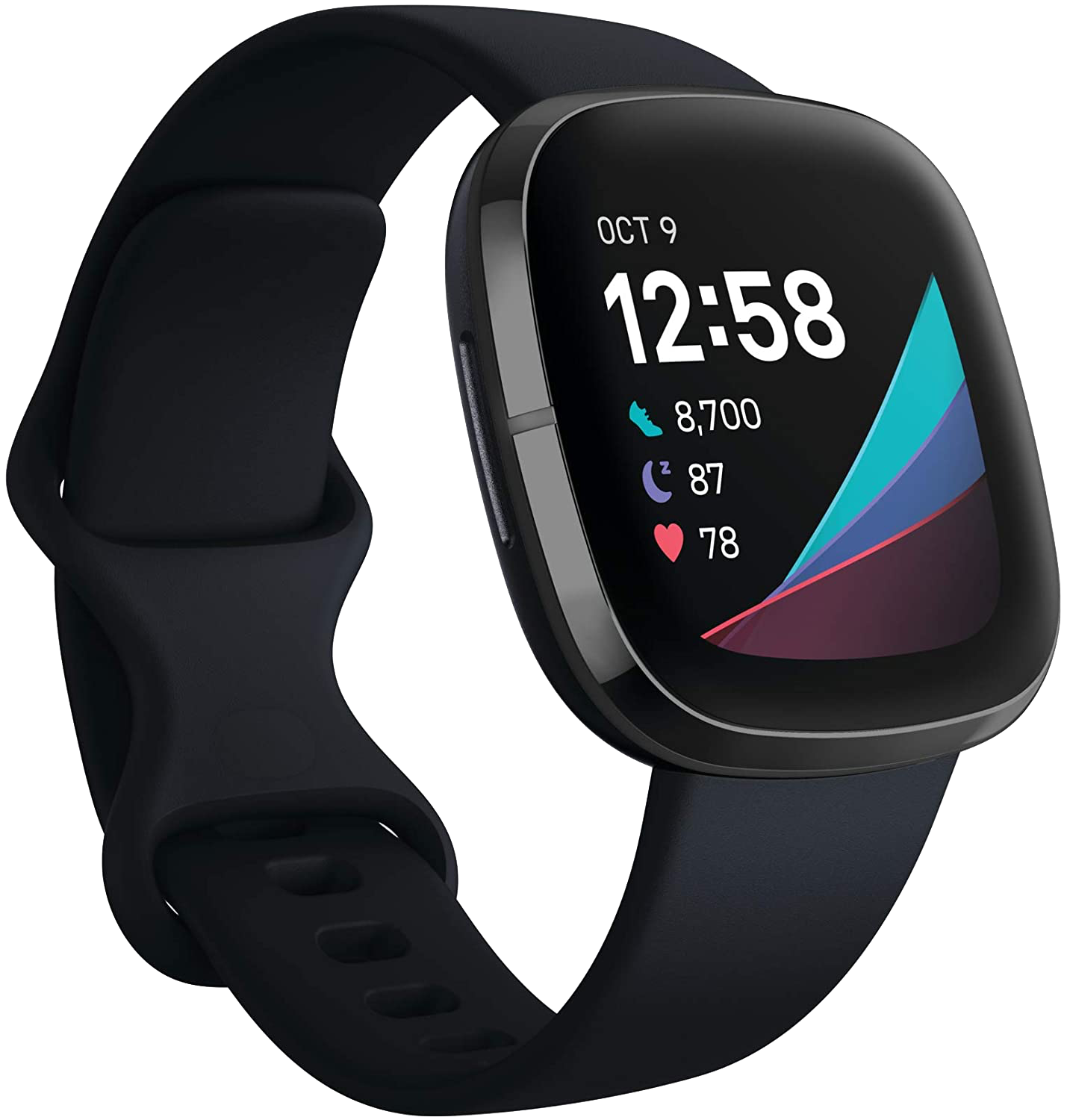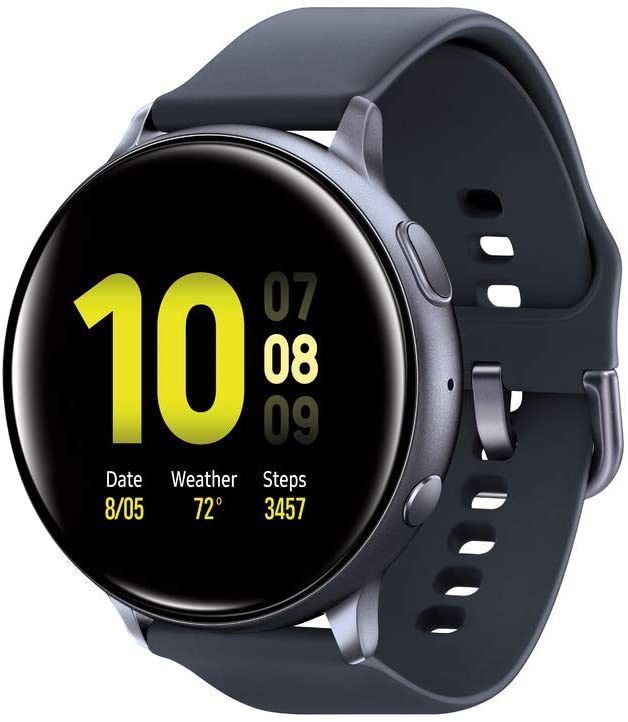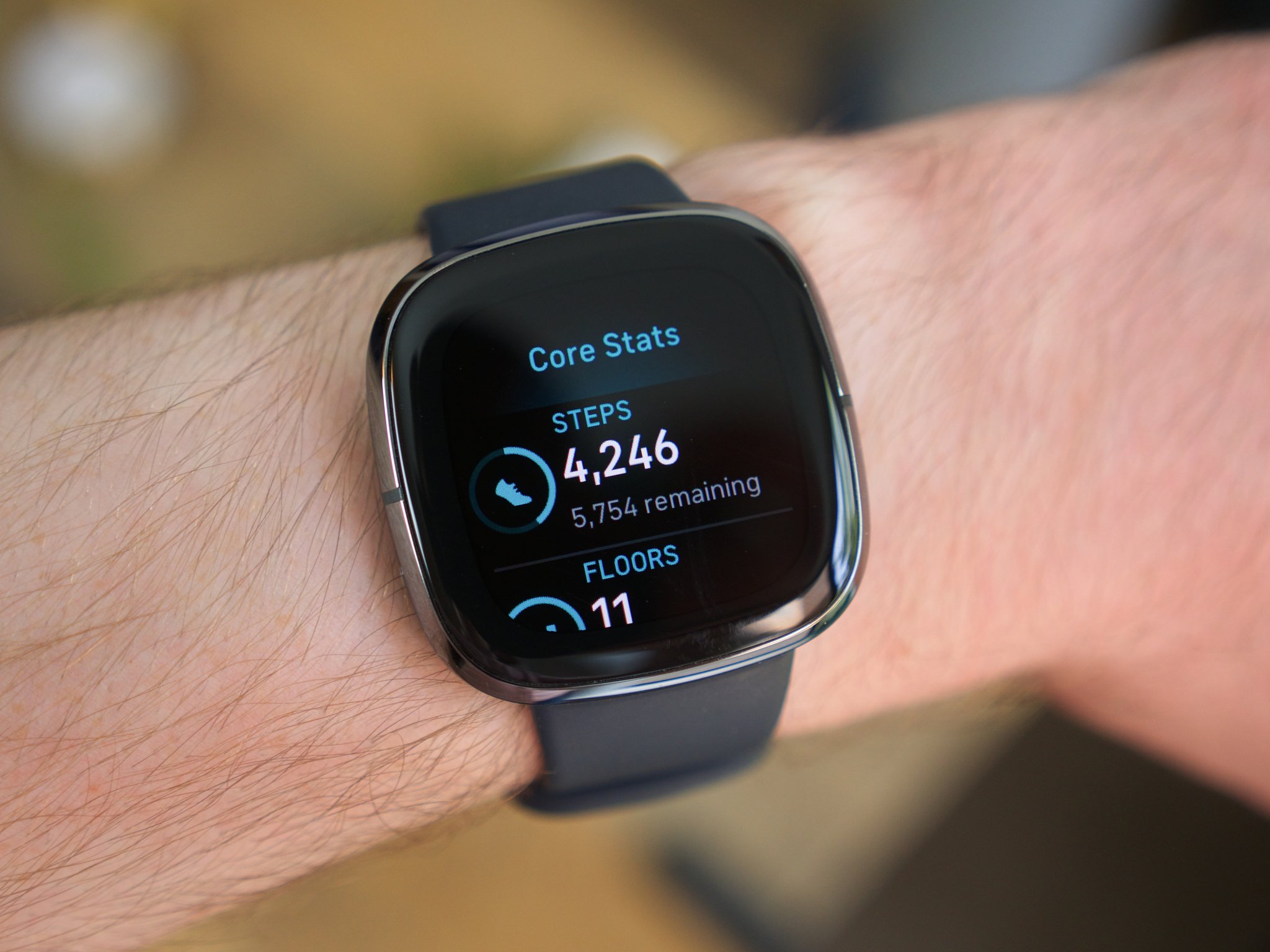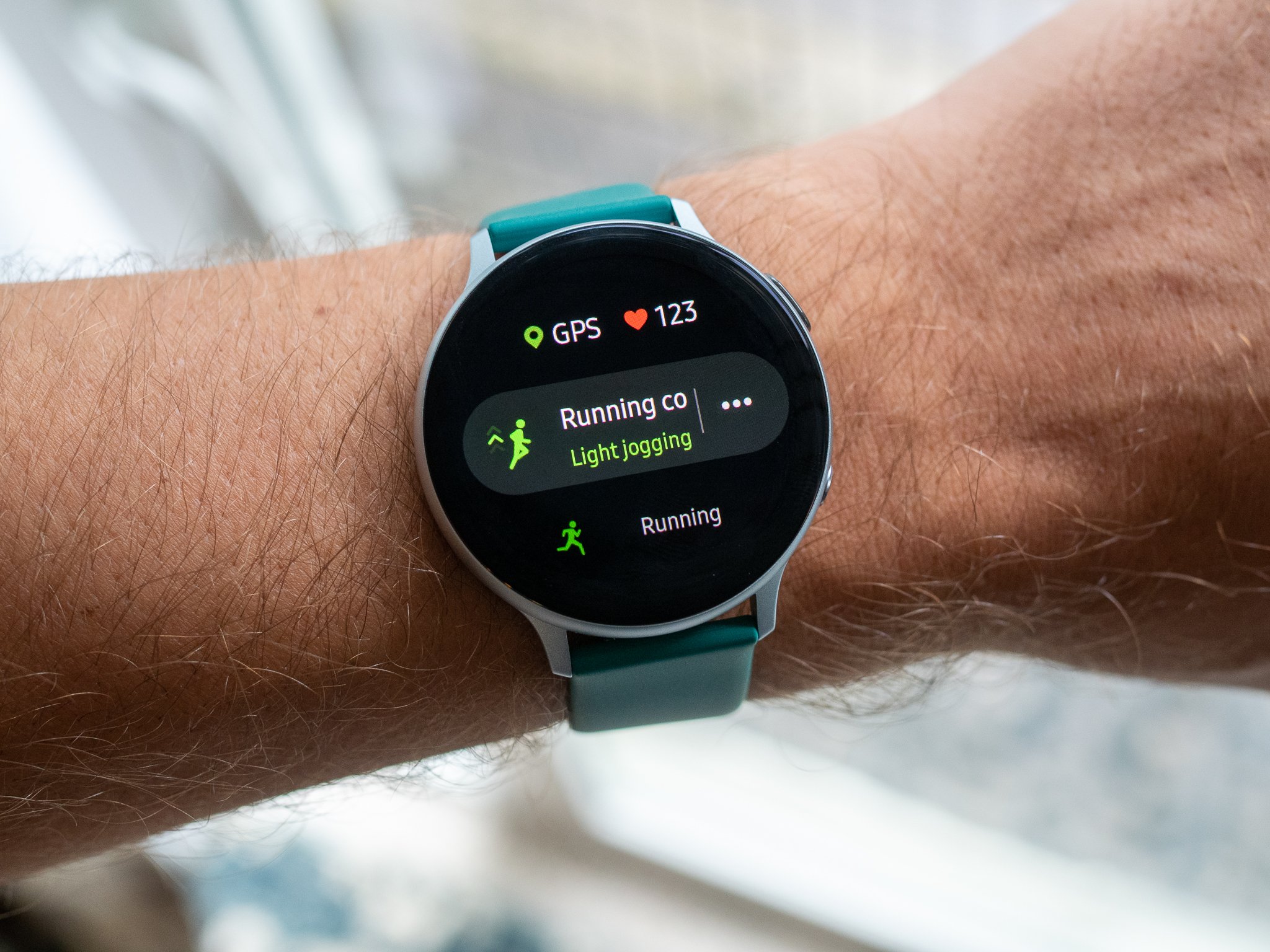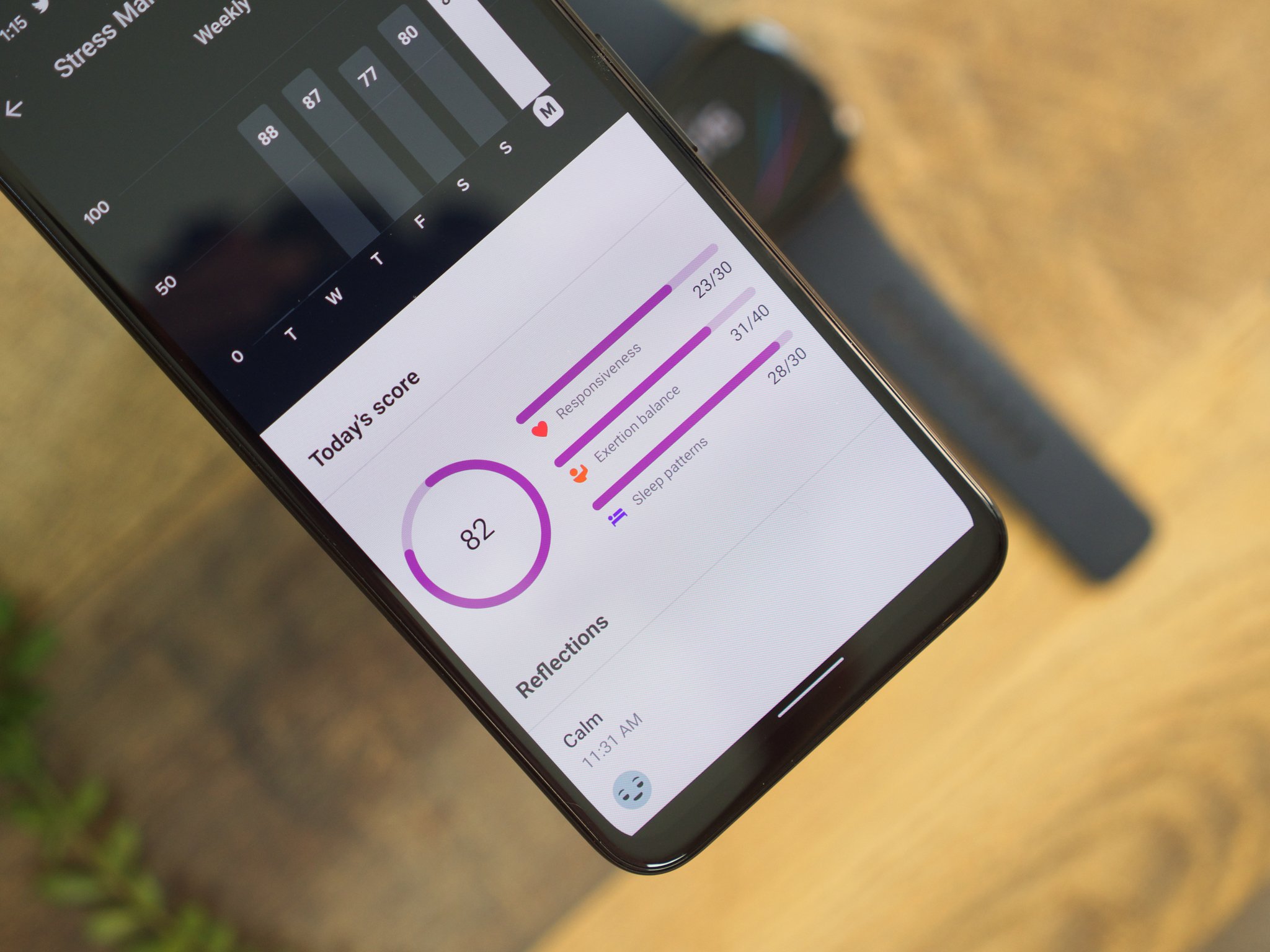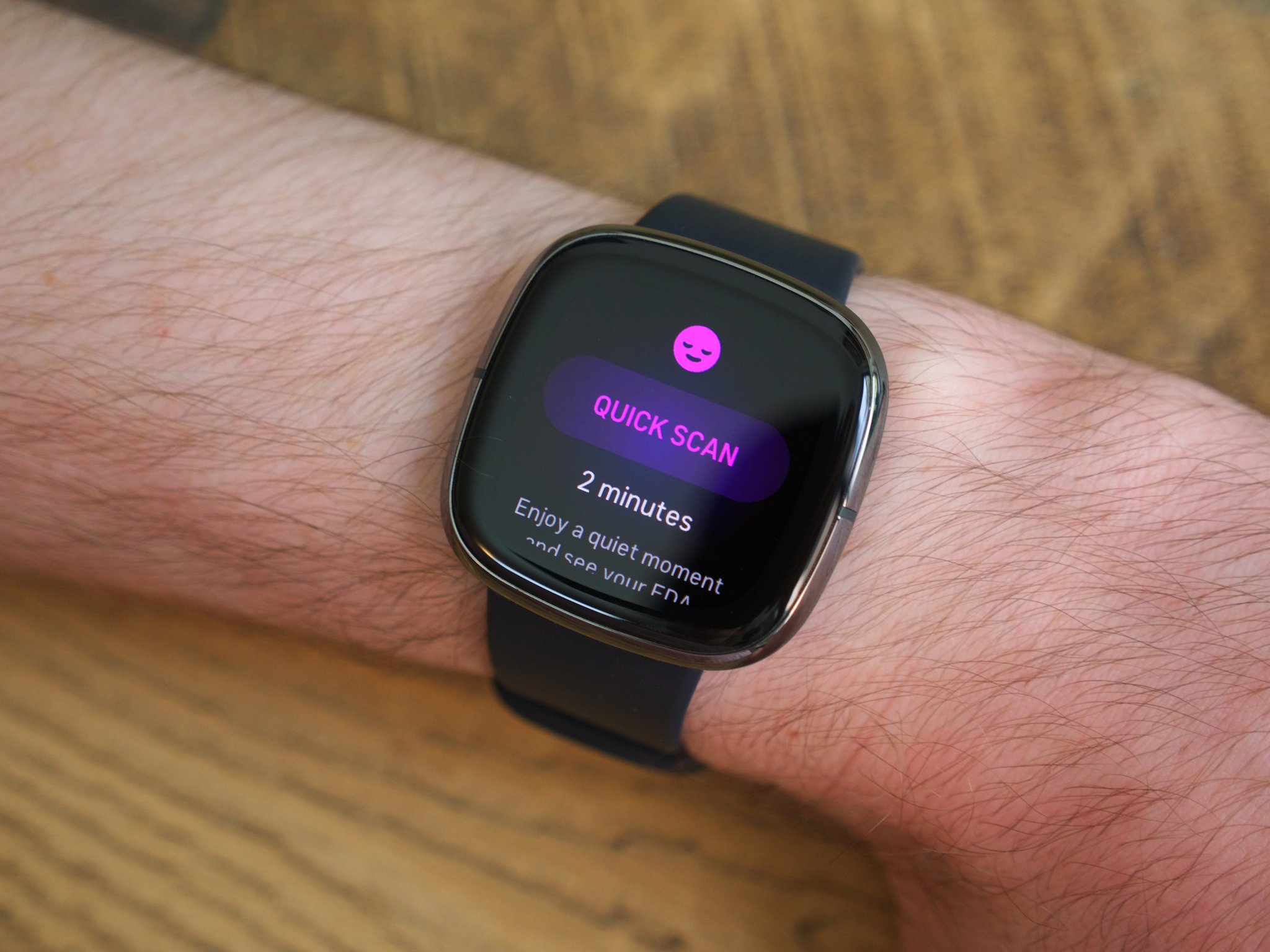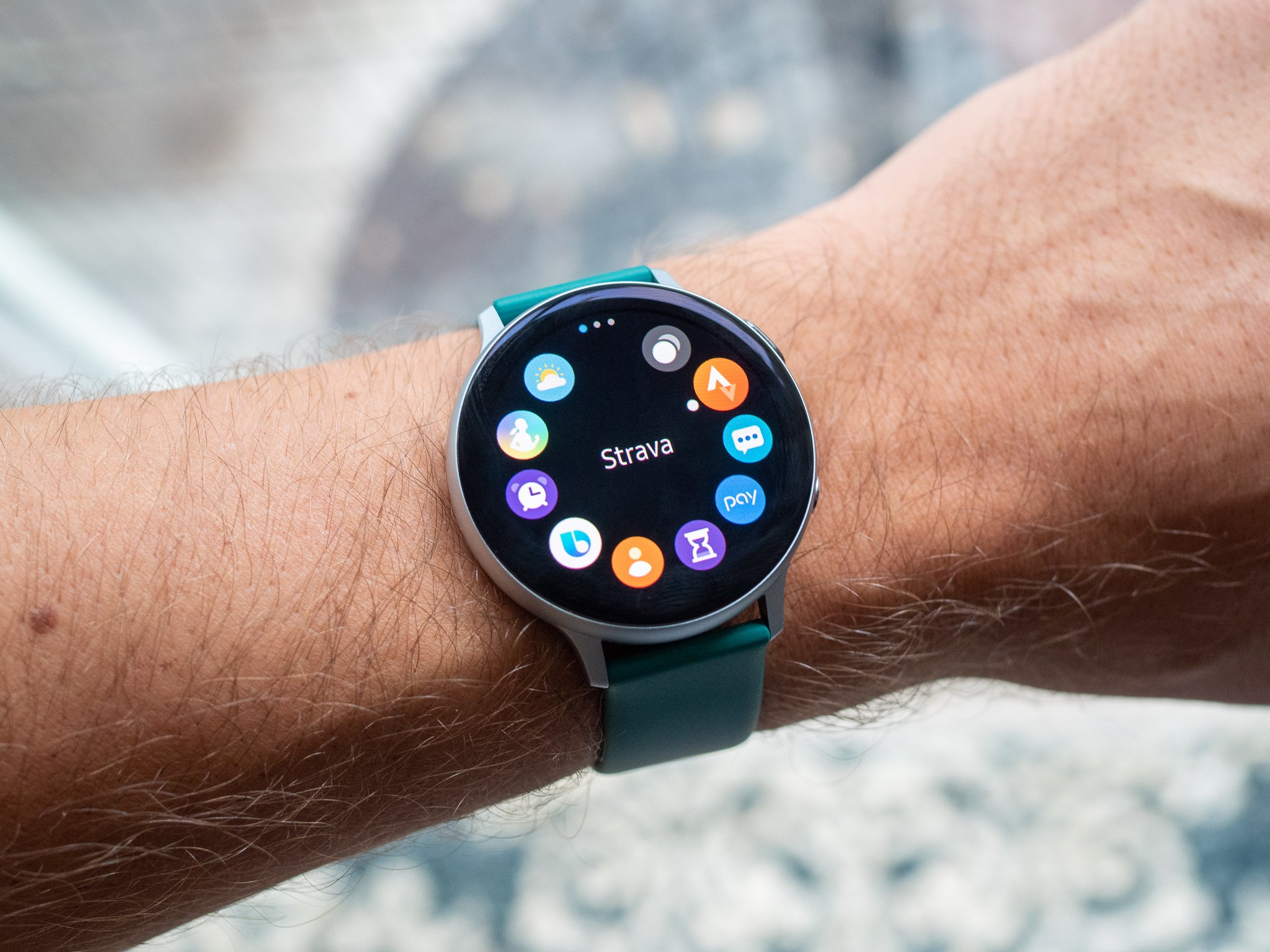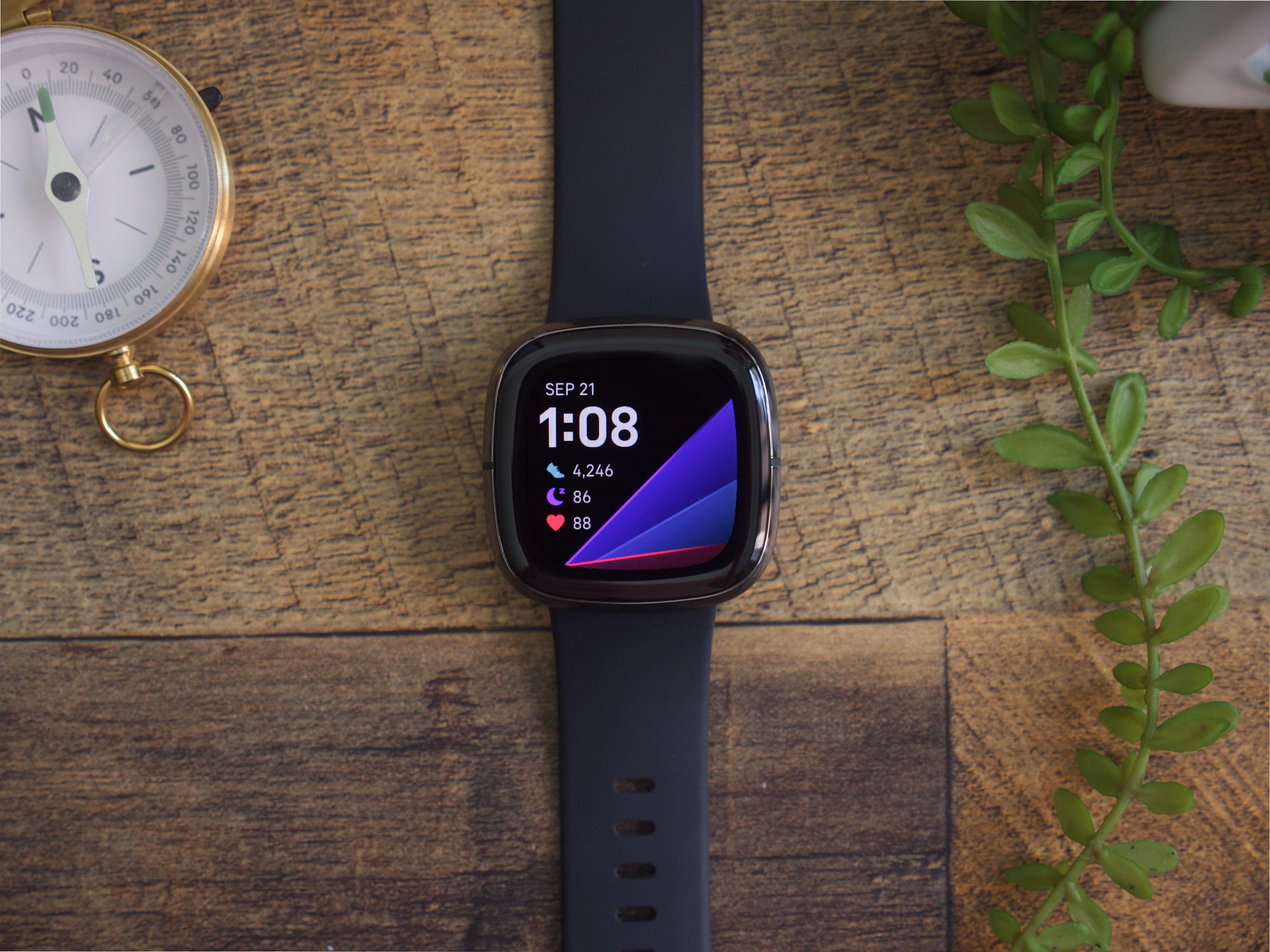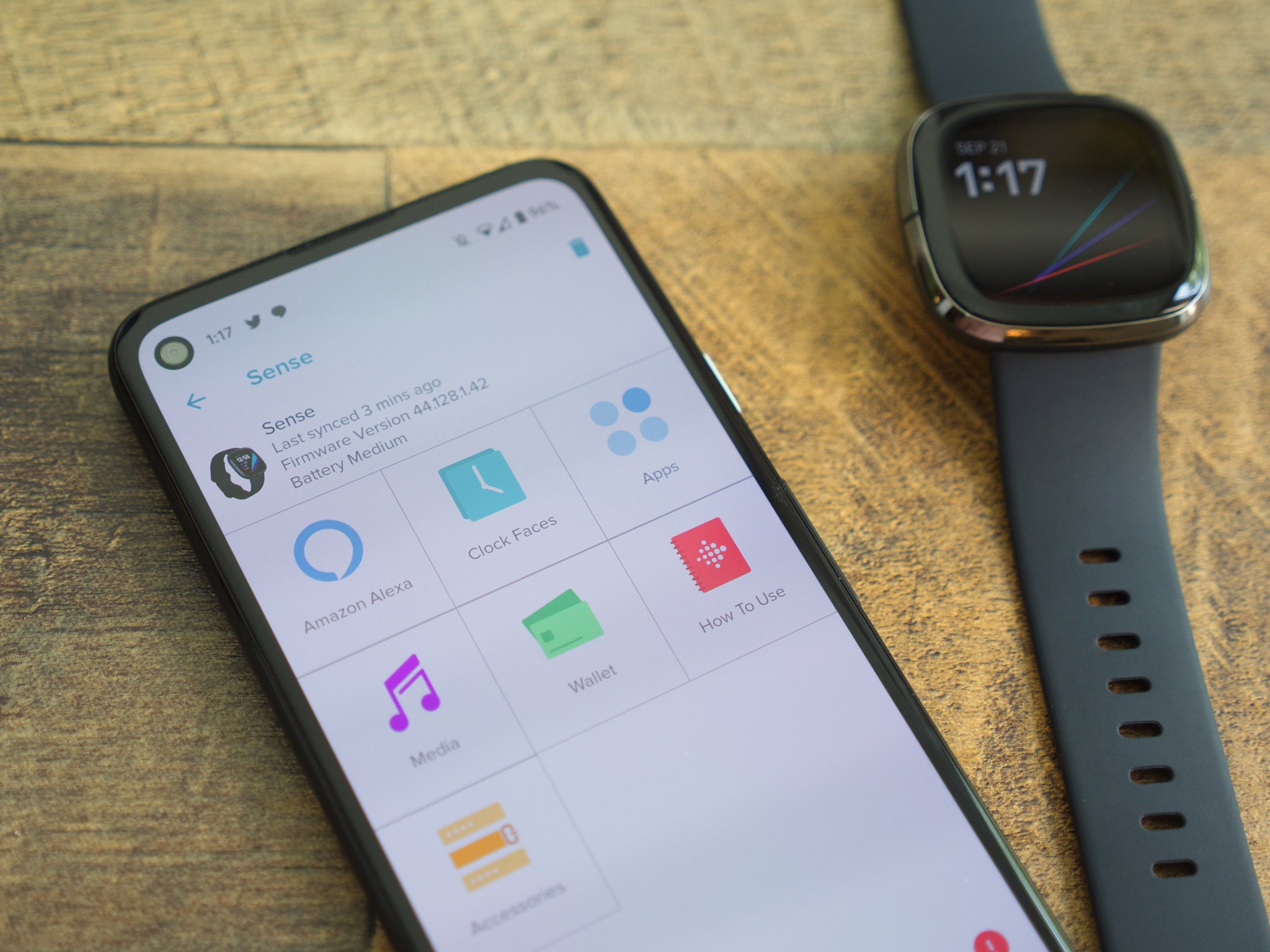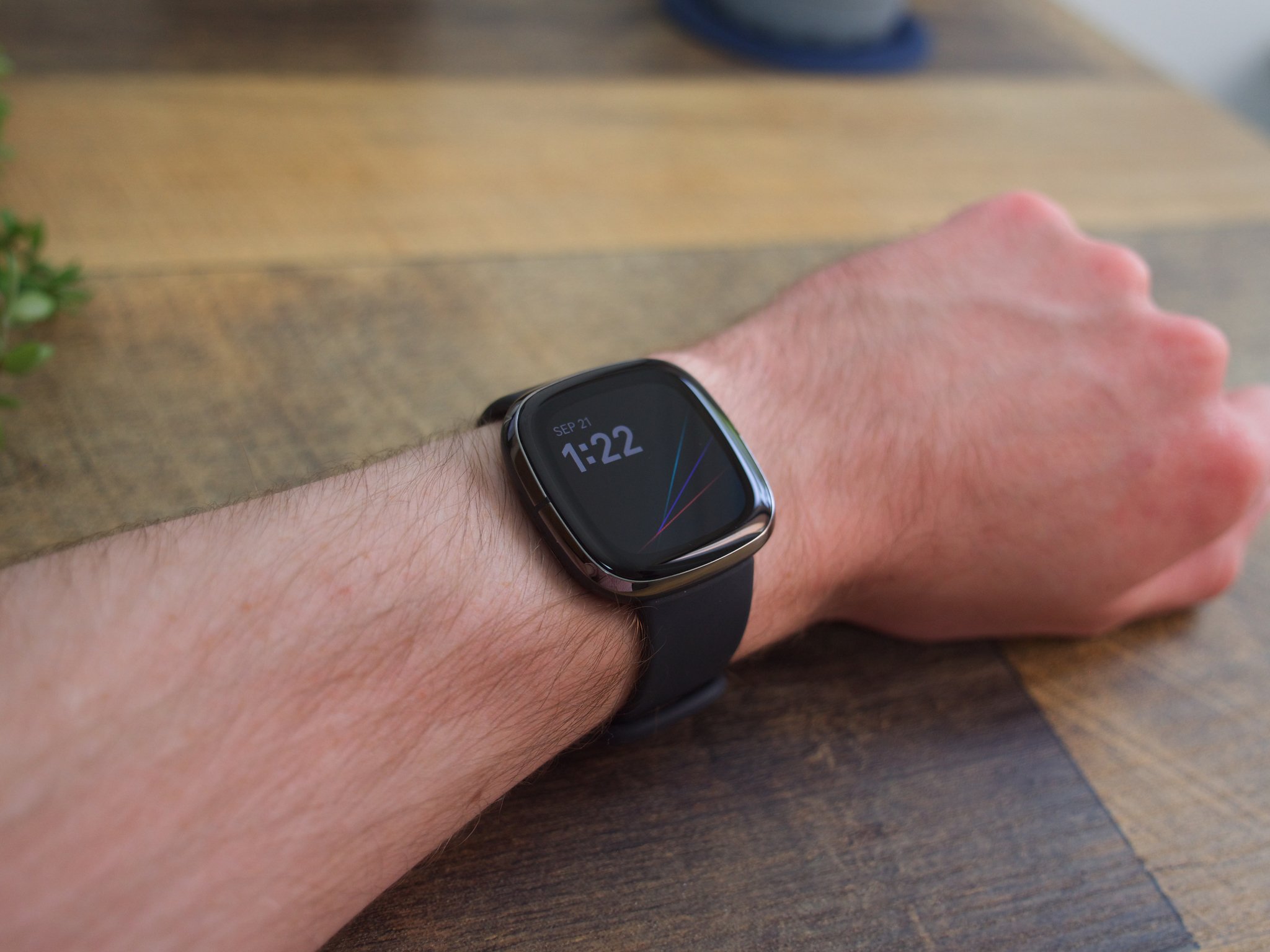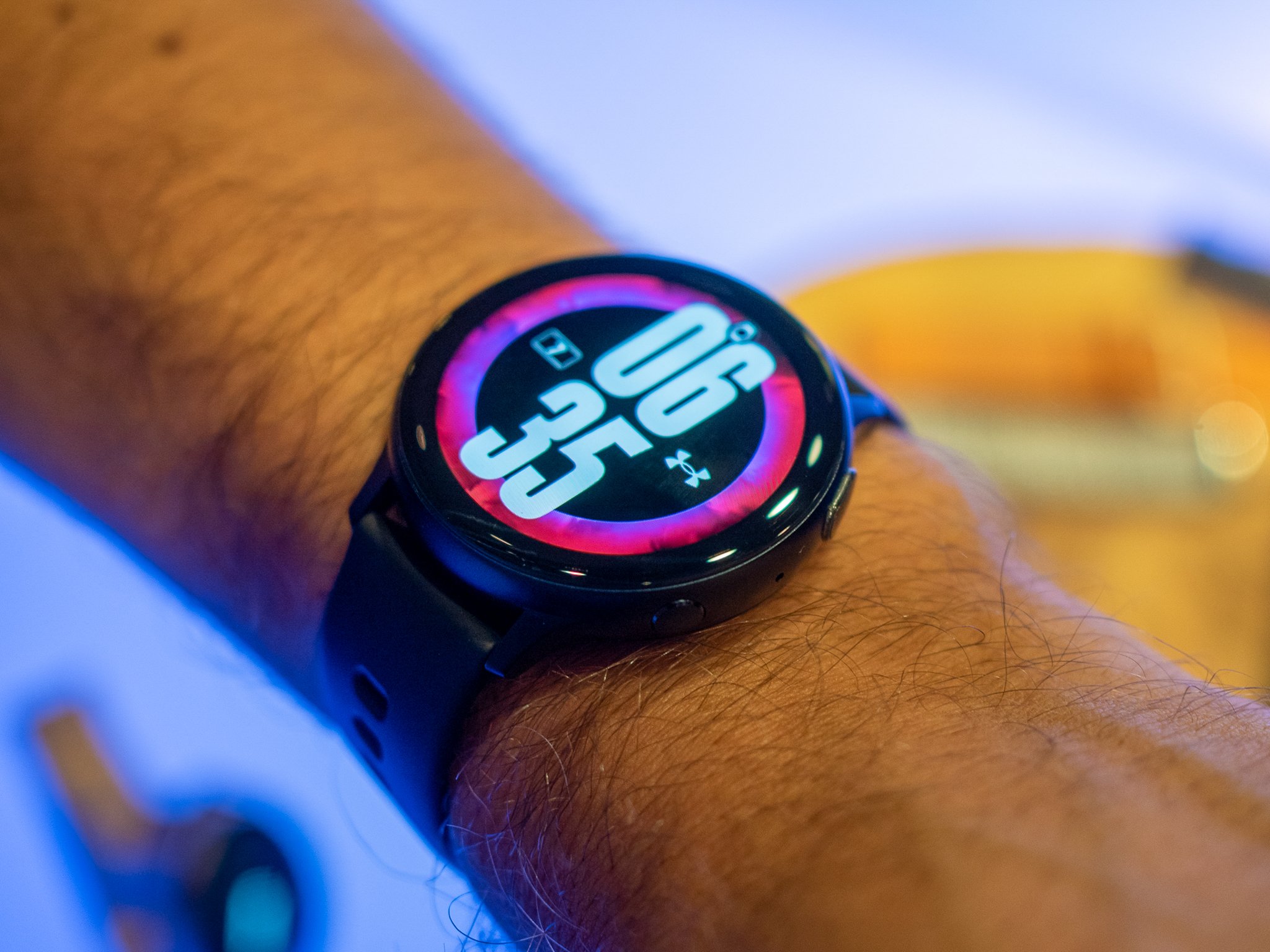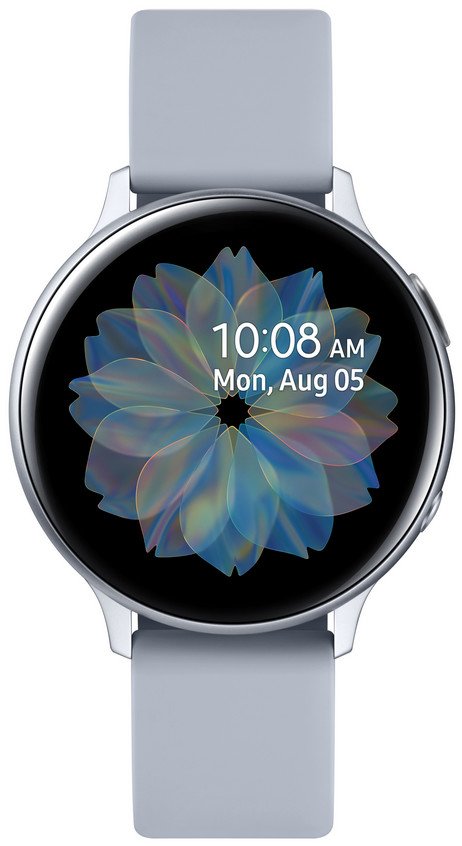Super advanced smartwatch
Fitbit Sense
Pros
- Built-in GPS
- Stylish design
- Robust sleep tracking
- Fitbit Premium free trial
- Unique skin temperature sensor
Cons
- Not a lot of storage for music
- Doesn't work with a ton of apps
- Expensive
The Sense is Fitbit's newest premium smartwatch, and it doesn't disappoint with all of the bells and whistles you'd expect in a high-end smartwatch and from Fitbit, including built-in GPS, detailed sleep tracking, heart rate tracking and zones, plus interesting new features like Sp02 oxygen saturation measurement and skin temperature sensor. Plus, the Fitbit app is second to none.
A fitness winner
Samsung Galaxy Watch Active 2
Pros
- Recharge from a compatible phone
- Special edition options for golfers, runners
- Two size options
- Stylish design
- Cool turn and touch bezel
Cons
- Battery only lasts a few days per charge
- Round face not for everyone
While it's a year old now, the Samsung Galaxy Watch Active 2 is still an excellent option for fitness-focused individuals. It offers many of the same base features as the Fitbit Sense, along with the addition of things like trip detection, a neat touch bezel, special edition versions for golfers or runners, and Samsung-specific integrations with things like Samsung Health Monitor and Bixby voice assistance.
Fitbit turned heads with its attractive-sounding Fitbit Sense device, which was announced in September 2020. And while the Fitbit Sense shows promise, the Fitbit Sense vs the older Galaxy Watch Active 2 makes for an interesting question: which one is better? Before analyzing that question, let's take a look at how they compare on the core specs.
| Fitbit Sense | Samsung Galaxy Watch Active 2 | |
|---|---|---|
| Operating System | Fitbit OS | Tizen OS |
| Battery Life | 6+ Days | Under 2 days for 40mm, up to 2.5 days for the 44mm |
| Mobile Payments | Fitbit Pay | Samsung Pay |
| Display | AMOLED | AMOLED |
| Water-Resistant | Up to 50m | Up to 50m |
| Charging | Proprietary | Proprietary, Wireless Powershare |
| GPS | Built-in | Built-in |
| Music Storage | 2.5 GB | 4 GB |
| Connectivity | Bluetooth | Bluetooth, LTE (optional) |
| Notifications | Yes | Yes |
| Built-in Sleep Tracking | Yes | Yes |
| Heart Rate Monitor | Yes | Yes |
| ECG | Yes | Yes |
| Sizes | One Size | 41mm, 45mm |
| Compatibility | Android, iOS | Android, iOS |
As you can see, the watches are pretty similar in feature set, with only slight differences between them. But they do look a lot different from one another, and each has its unique pull.
Fitbit Sense vs. Samsung Galaxy Watch Active 2: The perfect fitness and sports companion
Fitbit has always been at the top of its game when it comes to fitness tracking, and the Sense offers all of the same fitness-related functions loyal Fitbit customers have come to love and expect, and then some.
It not only tracks your basic daily activity, including steps, floor climbs, active minutes, and calories burned, it can also track 20+ goal-based exercises. And with SmartTrack, it will automatically recognize certain exercises and start tracking automatically if you forget. The Galaxy Watch Active 2 can track even more – up to 39 different activities – and it also has auto-tracking for seven specific activities: walking, running, cycling, rowing, elliptical training, dynamic workouts, and swimming.
One feature that's really cool with the Fitbit Sense, however, is Active Zone minutes, which uses the built-in heart rate monitor to track when you reach peak, cardio, and fat burn zones, or conversely, when you haven't yet reached a targeted zone. This helps you determine if you need to ramp up your efforts or slow down to get the optimal results.
But the Galaxy Watch Active 2 stands out in its own way when it comes to exercise, providing continuous heart rate tracking as well as high and low alerts, and VO2 max to evaluate your oxygen consumption while running. It also comes in two special edition versions that are specific to enthusiasts or pros in either golf or running. The Golf Edition includes touch targeting, shot history, and dual arc distance readings as well as provides information on 40,000 courses from around the world. And the Under Armour edition comes with the MapMyRun app loaded out of the box along with six months of premium benefits providing real-time feedback. Additionally, a few feature carried over from the Galaxy Watch4 allows you to add friends and family members to Challenges where you can either compete against one another or work together in teams, which can be a great way to motivate one another. You can compete with others in Fitbit but there isn't an option to do so in teams.
Both also feature built-in GPS for tracking runs and routes even without your smartphone.
Thus, when it comes to overall fitness, both devices do a pretty good job, though the Fitbit Sense has a leg up with the real-time heart rate tracking to help optimize workouts. The ability to run on-screen coaching on the watch itself is pretty neat, along with the option for the Fitbit Premium subscription. But if you're a golfer or runner, you might find the Galaxy Watch Active 2 a better fit given the very specific features geared towards enthusiasts of these sports.
Fitbit Sense vs. Samsung Galaxy Watch Active 2: Bop to the beat
Music is a big motivator when working out, and you can listen to your favorite workout playlists with both watches. The Fitbit Sense has 4GB, enough storage for some playlists from Deezer, or your own library, and you can also use it to control Spotify playback from a connected smartphone.
You can also download music to the Galaxy Watch Active 2 via its 4GB of storage space, or stream from apps like Spotify. With the addition of an LTE option, you could also stream tunes without needing your phone, making for an effortless experience when working out at the gym or going for an afternoon cycle when you want to leave your phone at home.
Fitbit Sense vs. Samsung Galaxy Watch Active 2: Catch some ZZZs
These days, the most premium smartwatches go beyond just tracking exercise, sports, and general fitness. There is much more that goes into your health and wellness.
One of the biggest factors is sleep, and Fitbit still remains one of the best when it comes to detailed sleep tracking and analysis. The watch tracks how much sleep you get as well as the quality via Sleep Stages, which break down light, deep, and REM sleep duration and patterns. It also gives you an overall Sleep Score each morning so you can see what factors might impact how well you sleep. Additionally, the Sp02 sensor tracks oxygen saturation, which, should you detect high levels, could indicate issues like sleep apnea. With a Fitbit Premium subscription, you can also measure your breathing rate and heart rate variability.
The Fitbit Sense also has a Smart Wake feature that can calmly awake you at the right time via a vibrating alarm, as well as a Sleep Mode you can set on a schedule for muting phone notifications to prevent you from getting distracted. (You can do the same during the day using the Do Not Disturb feature.)
With respect to sleep tracking, the Galaxy Watch Active 2 can assess your sleep as well, but the details aren't as robust as you'd get with the Sense.
Fitbit Sense vs. Samsung Galaxy Watch Active 2: Going beyond exercise, sports, and fitness
In addition to sleep tracking, there are other aspects that a smartwatch can measure to provide insight into your overall health and wellness.
Both devices can measure stress levels, with the Sense giving you a stress management score. They both have ECG apps that can detect atrial fibrillation and irregular heart rhythm. The Sense adds a neat skin temperature sensor that logs data nightly, comparing it to a baseline figure. It can also log your mood after an electrodermal activity (EDA) score to indicate your body's response to stress.
Like other Fitbit devices, the Sense tracks menstrual health, with the app serving as a spot where women can log symptoms and see fertile windows, and predicted periods.
Ideal for older individuals or those with mobility issues, the Galaxy Watch Active 2 has trip detection that can sense if you have taken a fall so you can get in touch with authorities for help. A new feature that has been extended to this watch is advanced fall detection, which lets you choose to detect falls even when you're standing still. If you fall, an SOS can be sent to your pre-selected contacts to make sure you get help immediately.
The Galaxy Watch Active 2 also works alongside Samsung Health, which provides more insights into your health and helps you set goals.
Other useful features with both is that they are swimproof so you can wear them in up to 50 meters of water, and they are both compatible with voice control assistants, the Fitbit Sense with Google Assistant and Amazon Alexa and the Galaxy Watch Active 2 with Samsung's own Bixby smart assistant. They both work with their own respective mobile payment apps as well. Another point goes to Fitbit for the handy Find my Phone app, which lets you ring or vibrate a misplaced phone from the watch itself.
Fitbit Sense vs. Samsung Galaxy Watch Active 2: All about style
While the Fitbit Sense looks more like a smartwatch with a square-ish face (with rounded edges), the Galaxy Watch Active 2 is designed to look more like a standard wristwatch with a round face.
The Fitbit Sense has one side button, while all functions are controlled using the touch-sensitive AMOLED screen. Fitbit users tend to rely mostly on the detailed app to check progress and stats. The Galaxy Watch Active 2 has a neat touch bezel so you can both turn and tap to navigate menus.
With both, you can choose from a variety of bands and colors. The Fitbit Sense has a polished stainless steel ring and some exclusive band options, including the new Infinity Band, which is soft, lightweight, and flexible, as well as exclusive collections from Victor Glemund and Pendleton. A new quick-release feature makes it super-simple to swap among them. But it only comes in one size.
The Galaxy Watch Active 2 comes in two sizes — 40mm or 44mm — with a 1.2-inch or 1.4-inch screen. It comes in either aluminum or stainless steel (the latter is only compatible with Android devices) with various band colors and finishes as well. With both, you can choose from several different watch faces, with 10 new ones recently added to the Active 2 options, including a lovely endangered animals one and the funky and modern color duo look.
Fitbit Sense vs. Samsung Galaxy Watch Active 2: Battery life is key
Where the Fitbit Sense really excels is in terms of battery life: it will last for up to six days per charge, which means you really only need to charge it once a week. That is drastically reduced to just 12 hours if you use GPS continuously, though most users won't. That said, it does quick charge in just 12 minutes, which is an appreciated feature if you need a battery boost in a pinch.
Only lasting for about two days per charge, depending on the size, the Galaxy Watch Active 2 leaves much to be desired in this respect. But a really useful feature for Galaxy smartphone owners is that it works with a feature called Wireless Powershare that lets you place the watch atop a compatible smartphone to gain a charge from it.
Fitbit Sense vs. Samsung Galaxy Watch Active 2: Which do you choose?
The good thing about both of these smartwatches is that, except for the stainless-steel version of the Galaxy Watch Active 2, they both work with Android or iPhones devices. So, in terms of compatibility, you're good either way.
It would stand to reason that the newer device of the two, the Fitbit Sense, would be the more logical option given that it has premium, brand new features like skin temperature sensing. However, it is almost $100 more, so budget constraints might come into play here. Though if budgeting is your issue, there's also the option of the new Versa 3 smartwatch,
which is around the same price and has many of the same features as the Sense, minus a few like the EKG and skin temperature sensing.
The much longer battery life as well as the detailed sleep tracking, not to mention the massive Fitbit community, might make the Fitbit a better fit for most users, especially those who don't use Samsung Galaxy smartphones and can't enjoy all of the extra integration features, like Wireless Powershare.
If you own a Samsung Galaxy smartphone, though, the Galaxy Watch Active 2 could be a seamless fit. And for those who golf or run, the special edition versions are no-brainer options.
Both are good choices, but if you're into the latest and greatest, you can't go wrong with the Fitbit Sense.
Latest and greatest
Fitbit Sense - Advanced Smartwatch
A worthy upgrade
$199 at Amazon $200 at Best Buy $199 at Walmart
Especially for those who already own an older-model Fitbit and are considering upgrading, the Sense adds some really valuable features that you won't find in other smartwatches, like skin temperature sensing, Active Zone Minutes, and tons of personalization options, including the cool Infinity Band.
Run with it
Samsung Galaxy Watch Active 2 - Silver
A runner's companion
From $149 at Amazon From $230 at Best Buy From $149 at Walmart
Samsung has come out with new smartwatches, but none as fitness-friendly as this one just yet. Its advanced sensors, auto-tracking of workouts, ECG monitoring, LTE connectivity option, and special edition versions make it a winner for athletes and fitness folks of all kinds. And it's a solid choice if you own a Galaxy smartphone.
Source: androidcentral
